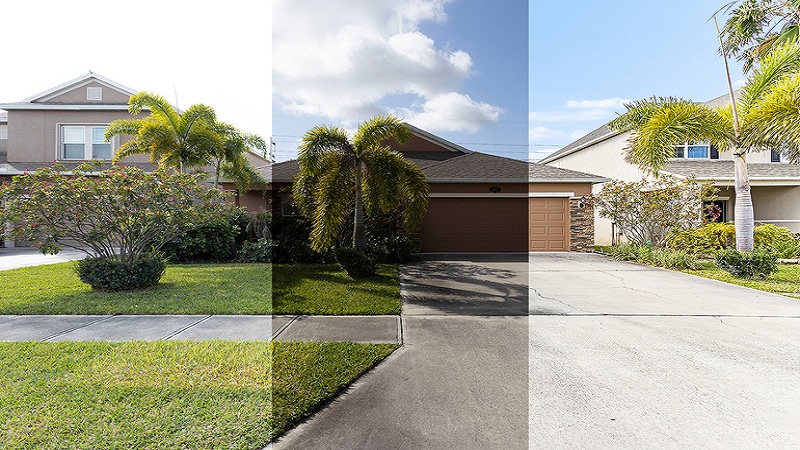Real estate photo editing software, the significance of high-quality imagery cannot be overstated. Photo editing plays a crucial role in presenting properties in their best light, which can greatly influence potential buyers’ perceptions. The real estate market thrives on visuals; therefore, edited images serve as a tool to enhance property listings, making them more appealing and engaging. Studies illustrate that property listings featuring professionally edited photographs garner significantly more views compared to those that utilize unedited images.
Understanding the Importance of Photo Editing in Real Estate
High-quality images are essential not only for attracting attention but also for establishing a strong initial impression. Edited photos allow real estate agents and sellers to showcase a property’s prime features while diminishing the visibility of any negative aspects. For instance, brightening a room or removing distracting elements can help agents create a more inviting atmosphere, appealing directly to the emotions of potential buyers. Empirical evidence suggests that homes with visually appealing imagery tend to sell faster and often at higher prices, making photo editing a worthwhile investment.
Moreover, the psychological impact of imagery in marketing has been extensively documented. Studies show that high-quality real estate images incite a higher level of interest and engagement among buyers. Buyers often equate the quality of images with the overall value of a property. Consequently, properties depicted through expertly edited photographs seem more desirable and trustworthy. In an industry where competition is fierce, leveraging the capabilities of photo editing software becomes paramount for showcasing properties in a manner that captivates and entices potential buyers. As technology continues to advance, the capabilities of photo editing will further enhance the effectiveness of real estate marketing strategies.

Top Real Estate Photo Editing Software Options
Real estate photography requires precision and attention to detail, making the choice of editing software critical for professionals in the field. There are numerous options available, ranging from beginner-friendly tools to more advanced programs tailored to seasoned photographers. Each software offers unique features, usability, and pricing structures that cater to different skill levels and needs.
One of the most popular choices is Adobe Lightroom, known for its powerful editing capabilities and comprehensive organization tools. This software allows users to enhance brightness and contrast, adjust colors, and apply presets. Its cloud-based functionality also enables editing on-the-go, making it a choice for many real estate photographers. However, the subscription model could be a drawback for some who prefer a one-time purchase.
Another highly regarded option is Photoshop, which offers extensive tools for image manipulation and retouching. While it has a steeper learning curve compared to Lightroom, its capabilities in fine-tuning images make it suitable for professionals who require detailed adjustments. Adobe offers multiple pricing tiers, which can be beneficial for users seeking flexibility.
For those looking for a more affordable option, Capture One is an alternative known for its tethering capabilities, allowing photographers to connect directly to their cameras during shoots. Its intuitive interface and powerful color grading tools make it an excellent choice for real estate images. Though slightly pricier than other entry-level software, it provides a compelling range of features that justify its cost.
An additional noteworthy mention is Skylum Luminar, which stands out for its user-friendly interface and AI-enhanced features. This software streamlines the editing process, providing tools such as sky replacement and AI structure adjustment, making it appealing to users who may not have extensive editing experience.
Each software has its strengths and weaknesses, and individual preferences will vary. Reading user testimonials and conducting trial versions can aid in making an informed decision on which photo editing software will best suit your real estate photography needs.
Essential Photo Editing Techniques for Real Estate Photography
Effective Photo editing is a crucial aspect of real estate photography that significantly influences how properties are perceived in the market. By employing various techniques, photographers can enhance the visual appeal of properties, making them more attractive to potential buyers. One of the fundamental techniques is the adjustment of brightness and contrast. This process helps to bring out details in shadows and highlights, ensuring that images are neither too dark nor excessively bright. Most photo editing software provides intuitive tools to achieve these adjustments, allowing photographers to experiment until the desired effect is reached.
Another critical aspect is correcting lens distortion. Wide-angle lenses, often used in real estate photography, can introduce unwanted curvature to images. By using correction filters available in editing software, photographers can straighten lines and provide a more accurate representation of the space. Applying HDR imaging is also beneficial, as it blends multiple exposure levels to create a balanced photo that captures the full range of light in a scene. This technique can be particularly useful in spaces with extreme lighting conditions, such as bright windows and darker interiors.
Color corrections play a significant role in ensuring that the images portray the property in its best light. Techniques such as white balance adjustments can eliminate color casts caused by artificial lighting or tinted windows. Moreover, the use of virtual staging tools offers a modern solution to showcase vacant spaces effectively. By digitally furnishing a room, potential buyers can visualize how the space might look when occupied. Additionally, sky replacement can dramatically improve outdoor images, replacing a dull or cloudy sky with a vibrant, blue backdrop.
Lastly, removing distractions from images, such as clutter or unwanted objects, ensures that the property remains the focal point. Utilizing editing software’s eraser or cloning tools allows photographers to clean up images seamlessly. By integrating these essential techniques, real estate photographers can significantly enhance their work, leading to more effective marketing and ultimately more successful sales.

